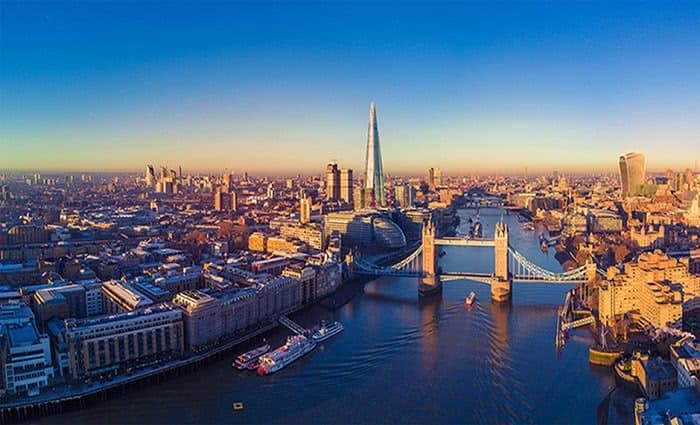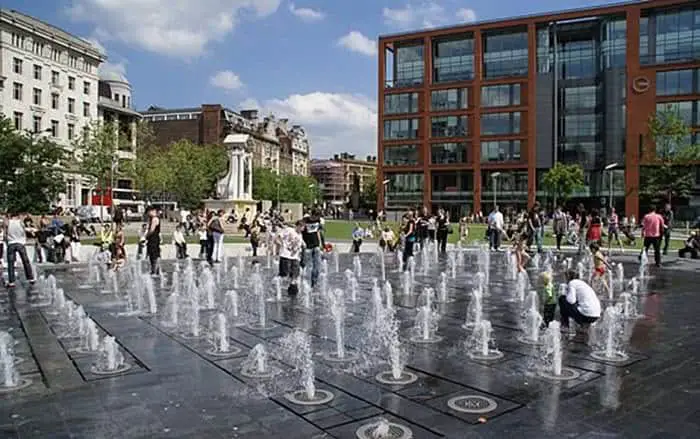The meaning of infrastructure is an interconnection between people and goods from one place to another using technical systems such as transport, telecommunication, urban planning, energy and water (Chattopadhyay, 2012). These facilities must be built and operated; pipes must be laid and maintained, traffic must be controlled (Eberhand and Bernstein, 1984). Infrastructure thus is apparently a matter of traditional engineering (Eberhand and Bernstein, 1984) and a skeleton of urban life (Chattopadhyay, 2012). These technical systems of infrastructure in a modern nation-state are not only channels of the economy but are also sinews of power and lines of control (Chattopadhyay, 2012). The extent of urban infrastructure is not just restricted to physical boundaries of urban areas but are extended to rural areas by way of commodity exchange as well as expropriation (Chattopadhyay, 2012). The urban form is mainly guided by the conceptions of infrastructural visions in time and space (Chattopadhyay, 2012). Furthermore, there is a spatial interconnection of the infrastructure with limits, size and morphology of a city (Cavallo, et al. 2014). In fact, historical evidence of urbanization arises from the presence of traffic nodes, where people and goods are exchanged, creating natural interaction and a direct relationship among infrastructures (Cavallo, et al. 2014). It’s strategic and symbolic value to the state is vital to both, politics and economics of the nation and is a crucial objective of its defense (Chattopadhyay, 2012).

Development Process:
Development of infrastructure is a combination of physical, social, institutional, conceptual elements (Eberhand and Bernstein, 1984). These elements work cohesively to produce an urban fabric. They collaborate to provide the desired infrastructure for the city (Eberhand and Bernstein, 1984). The physical features such as roads, wires, pipes and processing facilities will be built and operated (Eberhand and Bernstein, 1984). The institutional elements include administrative and managerial mechanisms for planning, developing, operating and maintaining the system (Eberhand and Bernstein, 1984). The evolution of these systems demands individuals and organization to use the system in a specific way depending upon its means of financing the system and providing with economic incentives (Eberhand and Bernstein, 1984). The social element centers on the impact the system has on its users regarding its costs and benefits distributed amongst the population. Conceptual elements include the way in which the system is viewed by managers and the users (Eberhand and Bernstein, 1984).
These complex elements of the society and contemporary urban areas are confronted with the urgent requirement of providing specific and complicated infrastructure solutions (Cavallo, et al. 2014). Cities become incompatible without newly built infrastructure (Cavallo, et al. 2014). The growth of population supersedes the pace of planning and development of the infrastructure (Cavallo, et al. 2014). Thus, infrastructure has always been the primary element of the city with growing demand and are interconnected with significant urban and territorial changes (Cavallo, et al. 2014). According to Kevin Lynch, infrastructure helps in developing an image of the city (Cavallo, et al. 2014). Therefore, infrastructure has a multi-dimensional viewpoint satisfying more than just the basic needs of the citizens.
The current trend:
The city undergoes a transformation process throughout its lifecycle (Cavallo, et al. 2014). The city keeps on satisfying ever-increasing demands such as its transportation network, modes of mass transportation, technological changes regarding its new infrastructure (Cavallo, et al. 2014). These additions to the cities have remarkable consequences on the way infrastructures, and their related buildings interact with the urban territory (Cavallo, et al. 2014). This is particularly suitable for a small-scale solution favoring more localized strategies, culminating in success story fragments and is a product of careful engineering and design solution, responding adequately to the contemporary urban condition (Cavallo, et al. 2014). However, the problem of the ‘whole’ remains, and there is a need to satisfy the management of large-scale urban infrastructure which keeps avoiding the spatial specificity within an effective architectural strategy (Cavallo, et al. 2014).

Architecture and Infrastructure:
Involvement of architects is required at different scale levels for the transformation of the city and the territory regarding its infrastructure and spatial planning management. (Cavallo, et al. 2014). The “image of the city” is the result of these years of coexistence between infrastructure buildings and the surrounding of the city and the territory (Cavallo, et al. 2014). The primary challenge in keeping this image of the city is that; it has to survive the continuous changes that occur throughout the lifecycle of the city (Cavallo, et al. 2014). It is also essential to understand the influence of the other buildings in the surrounding, how they are built and transformer which can be considered as the central architectural theme in these interventions (Cavallo, et al. 2014). The question is whether architects will be able to give justice to the development of infrastructure which connects build and unbuild urban fabric, superimposed on the city that claims the role of the spatial transformation (Cavallo, et al. 2014).
Conclusion:
The urban infrastructure is a part of urban planning right from prehistoric ages. There has been a tremendous amount of transformation which has taken place regarding technology, socio-cultural evolution, economics from the ancient ages to date and will keep on changing in the future. The point is how to maintain the image of the city and the spatial transformation. It is about whether to go on building or to preserve the existing for the future generation.
Also Read: Infrastructure Financing Through Land Based Financing
References:
Cavallo, R, Komossa, S, & Marzot, N eds. (2014), New Urban Configurations, IOS Press, Burke. Available from: ProQuest Ebook Central [26 February 2018].
Chattopadhyay, S. (2012), Unlearning the City: Infrastructure in a New Optical Field, University of Minnesota Press, Minneapolis. Available from: ProQuest Ebook Central. [8 March 2018].
Eberhard, J., & Bernstein, A. (1984) A Conceptual Framework for Thinking about Urban Infrastructure. Built Environment 10(4), 253-261. Available from [9 March 2018].